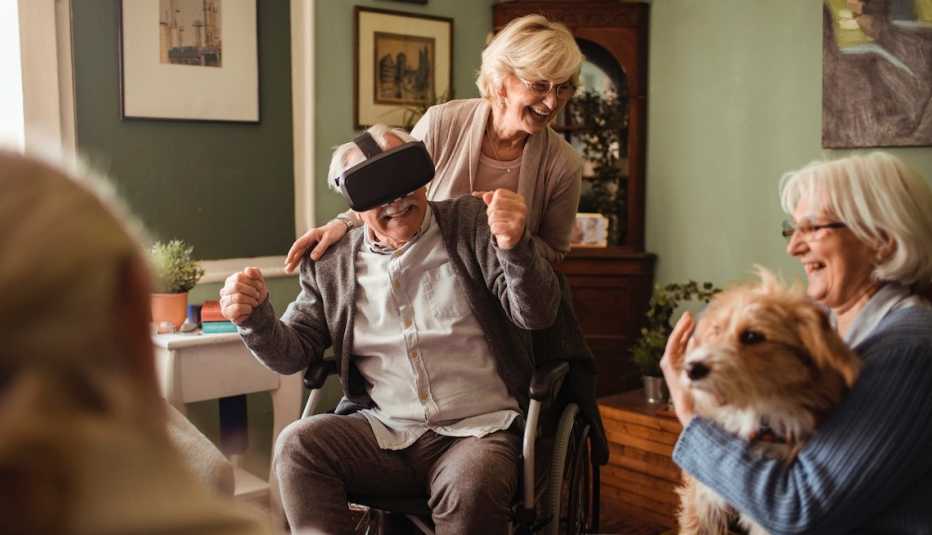Staying Fit
A 360-degree, high-resolution 3D virtual travel video in AARP Innovation Labs' Alcove virtual reality app for Occulus Quest gives you the best experience using the VR headset.
At Carlsbad By The Sea, a senior living community in California, a group of four residents recently came together to take a vacation.
Or, rather, a “vacation,” experienced courtesy of a virtual reality (VR) program that the nonprofit Front Porch Center for Innovation and Wellbeing directed. The participants donned Samsung Gear VR headsets.


AARP Membership— $12 for your first year when you sign up for Automatic Renewal
Get instant access to members-only products and hundreds of discounts, a free second membership, and a subscription to AARP the Magazine.
When one suggested they go to a beach in Belgium he remembered visiting as a child, “the facilitator took him and the whole group to that spot, and he just immediately lit up when he saw the pier,” says Davis Park, vice president of the innovation center. In the past five years, the center has been testing VR technology at Front Porch communities such as Carlsbad By The Sea, a little more than 30 miles up the coast from San Diego.
Groups can share realistic simulation


Senior living communities and experts concerned about isolation among older people — including AARP — are increasingly embracing VR, which creates an often stunningly realistic 3-D simulation of an experience or place as a way to not only transport people with mobility issues beyond the confines of their homes but also create crucial social connections.
One of the most pressing problems in people’s later years is social isolation, which affects more than 8 million older adults and is associated with mental and physical health issues that include depression, earlier onset of dementia and higher blood pressure.
The growing interest in using VR to combat isolation is quietly visible this week at CES, the Consumer Technology Association’s enormous annual electronics show. Held every January, the show draws more than 170,000 people in the tech business or media to the Las Vegas Strip. This week, the 2020 show is packed with dozens of vendors in the VR field, which has long been and still is mostly focused on the lucrative realm of gaming. VR software producers and hardware companies include HTC Vive, Lenovo and Samsung.
Among the participants is AARP Innovation Labs’ Alcove, an application that can be used with the Oculus Go VR headset and soon with the newer, higher fidelity Oculus Quest. Created with Somerville, Massachusetts- based Rendever, a startup developing VR experiences for people in senior living facilities, Alcove is aimed at intergenerational families and available free to anyone in the Oculus app store. An Oculus Go sells for about $150.
The application, released in beta last year and hitting CES this week with many new features, is set up like a virtual home where people can move around in “rooms” and choose destinations to visit together.
“It’s about creating a shared experience. You can have a 15-year-old in Washington, D.C., looking at the Eiffel Tower with his grandparents in California.”
— Rick Robinson, AARP Innovation Labs
“It’s about creating a shared experience,” says Rick Robinson, vice president of product development for AARP Innovation Labs. “You can have a 15-year-old in Washington, D.C., looking at the Eiffel Tower with his grandparents in California.”
The experience is similar at the Front Porch communities.


































































More on Home and Family
Remote Monitoring Systems Can Give Caregivers Peace of Mind
'Big Brother' tech at CES will help adult children keep a watchful eye on aging parents from afar
Balance-Sensing Scale Wins AARP's CES Pitch Event
Host Joe Montana praises technology for keeping older adults 'in the game'
Keep Older Adults at Top of Mind, AARP CEO Urges Tech Industry
50-plus Americans spent $140 billion on technology in 2018, AARP report finds